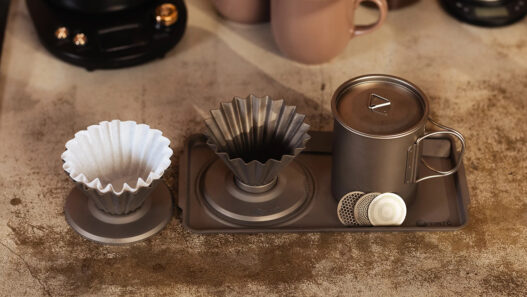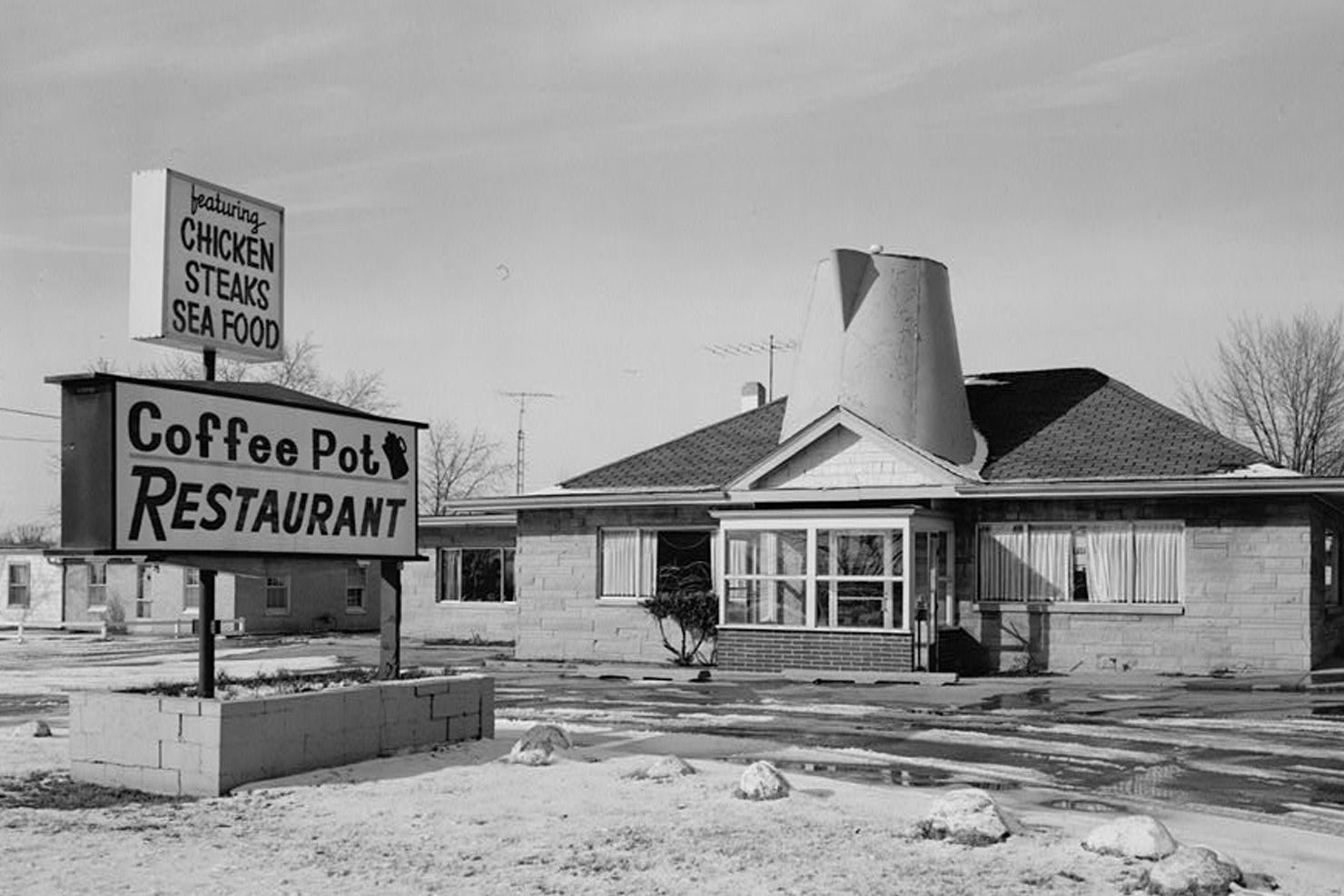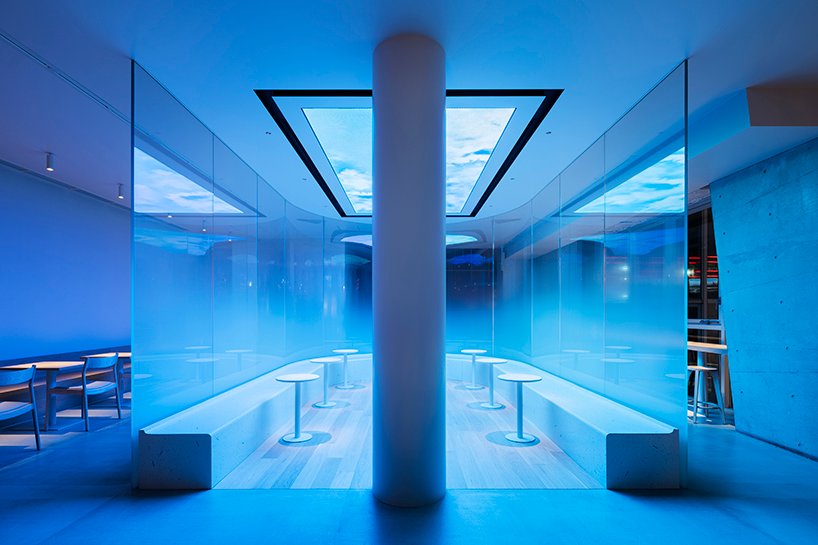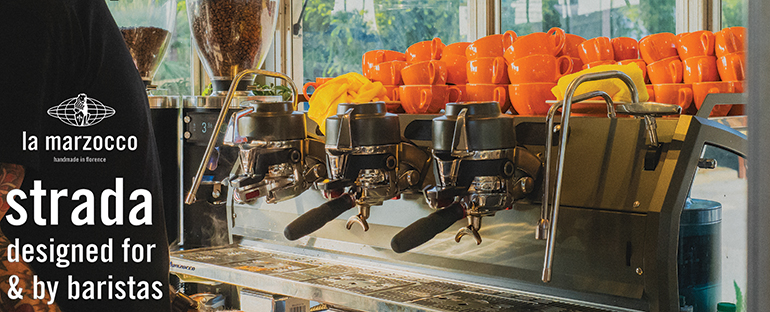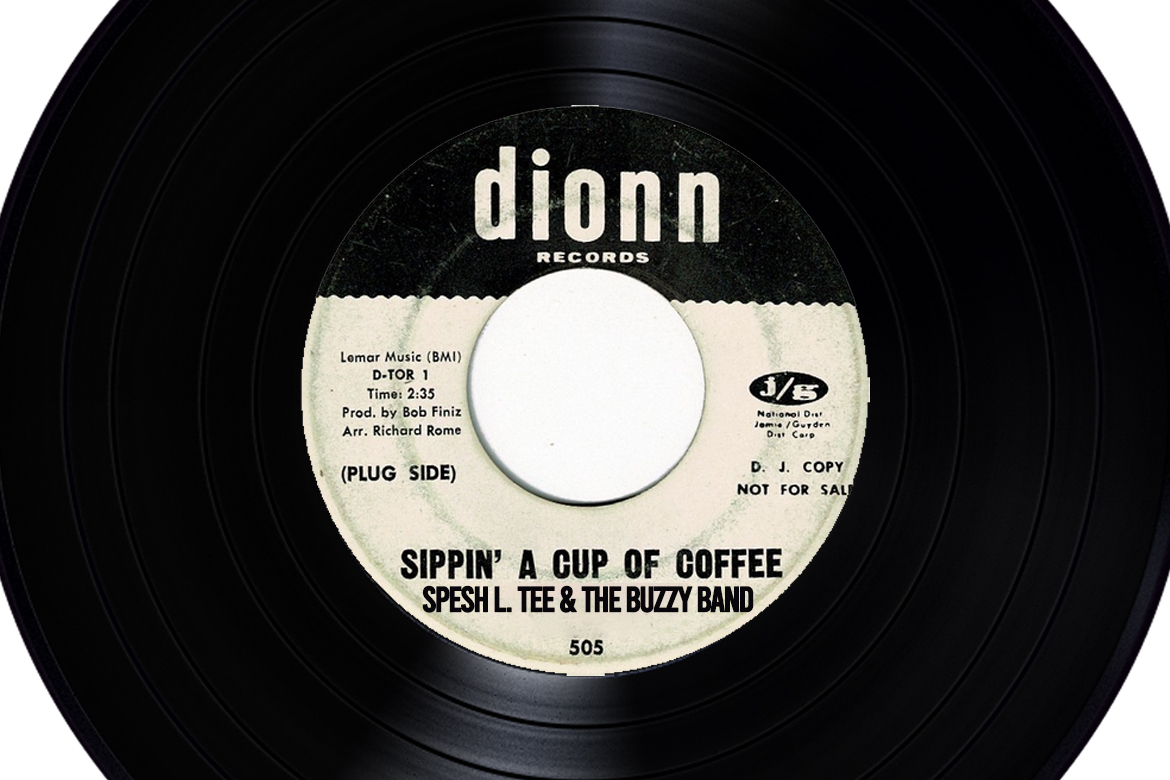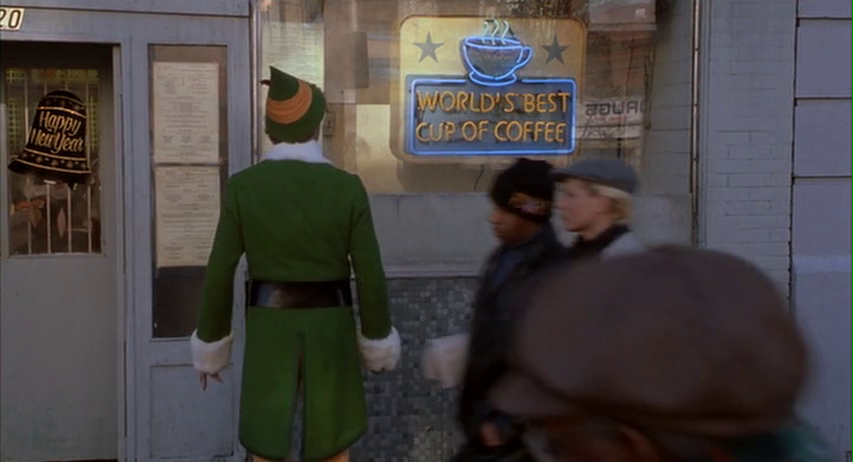Imagine yourself speeding along the highway and catching sight of a giant coffee pot poking its spout out of the ground. In the 1930s, chances are that it was a functioning cafe. Today, it’s more likely to be a historical icon worth stopping at.
I’ve written about miniatures before so it makes sense to u-turn for the opposite end: gigantic, towering coffee pots. I’m talking about a two-story coffee pot that if real and working, could hold 819,000 cups of coffee, but instead it houses a restaurant on the ground floor and an apartment on the second.
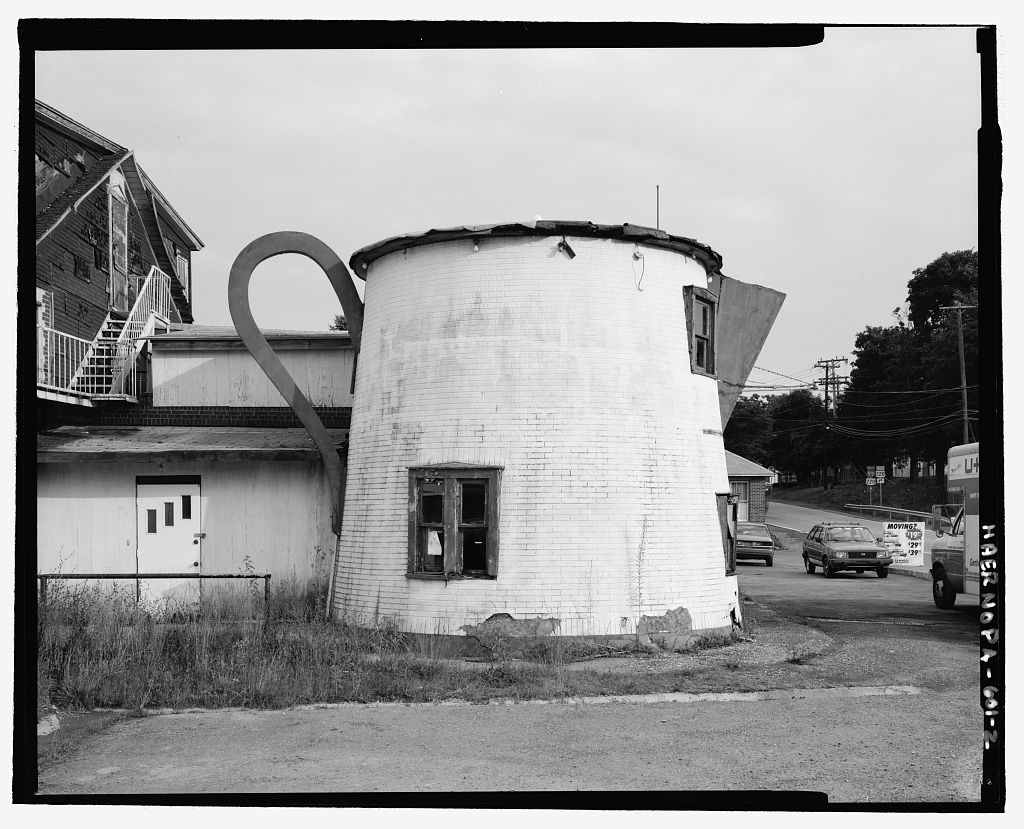
Bedford, Pennsylvania’s Koontz Coffee Pot is an excellent existing example of programmatic or mimetic architecture: buildings that look like other things. These buildings, along with nonfunctional giant items and interesting signs, are all housed under the general “roadside architecture” umbrella. Roadside architecture was born in the US in the early 20th century after cars became more affordable, cross-country highways were built, and the traffic traveled faster.
“One of the main reasons for the rise in roadside architecture was that by 1920, traffic was speeding up,” says Brian Butko, Director of Publications at the Heinz Historical Center. In roadside architecture, the building became the business’ sign and was infused with a novelty component. He explains, “Small signs in downtowns were fine when people were walking or at horse-drawn speed, but a business needed a way to quickly attract speeding drivers and announce what they were.” Thus began the construction of giant moka pots, donuts, pianos, and more.
The quintessential cross-country US road trip is romanticized as long stretches of pavement and fun, unique pieces along the way. “The height of flashy, funky roadside businesses, the 1930s through the 1960s,” says Butko. “Embodies a time when mass production made long-distance car travel possible.” While some businesses were corporate chains, “most of these roadside businesses were still mom and pop.”
The first highway created to cross the country was the Lincoln Highway, allowing automobile owners to traverse from New York City to San Francisco. David Berton Koontz built the Koontz Coffee Pot in 1927 on this route to attract customers to his adjoining service station. The Coffee Pot changed hands several times until it became vacant in 1980. Thanks to a state grant given to the Lincoln Highway Heritage Corridor in 2003, the building was moved to the Bedford County Fairgrounds, restored, and can still be seen today.
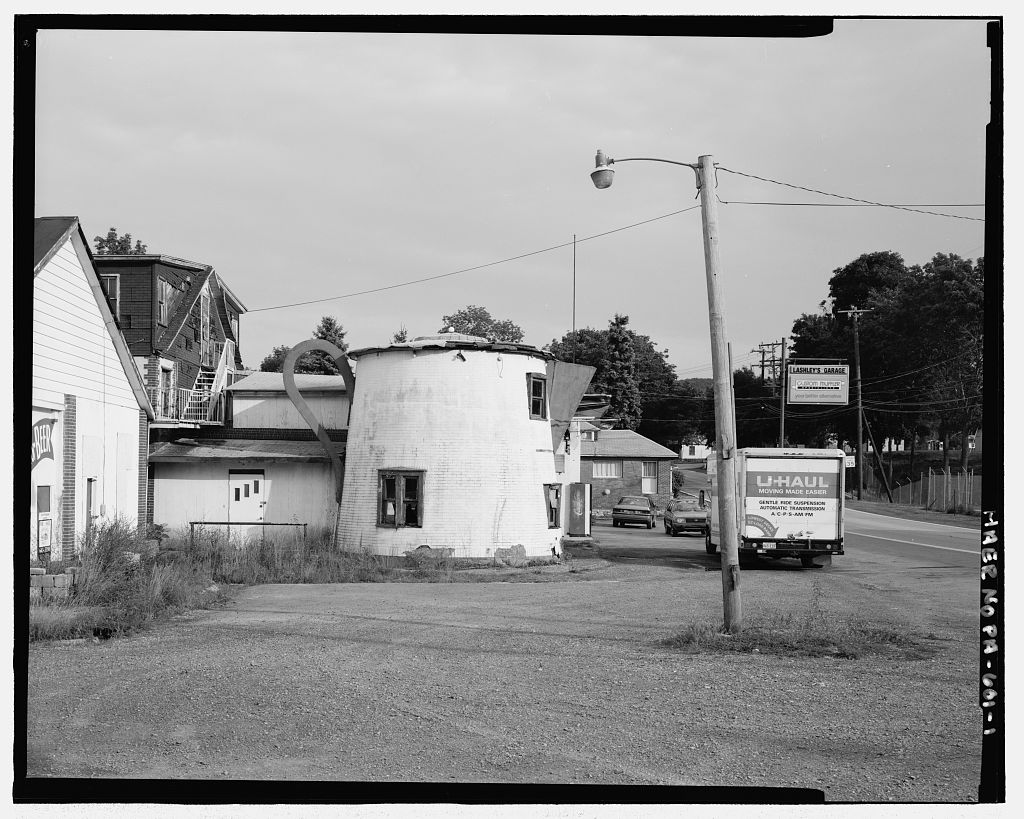
Over in Winston-Salem, North Carolina, the oldest of all the large coffee pots lives on. It was originally built in 1858 by tinsmith brothers Julius and Samuel Mickey to hang from the front of their workshop. At 7 ft. 3 in. tall and 64 in. at its base, it could conceivably serve 740 Moravian-sized cups of coffee.
Preserved today by The Wachovia Historical Society, the pot went through quite a series of events, some proven true and some rumored. One such rumor was that a Union soldier hid inside during the Civil War. Another was that for holiday events, “a small boy often shimmied up to its trap door to light a fire inside to boil water so that steam would come out of the spout.” Of course, no details are provided about how the coffee was filtered or poured.
On Halloween in 1930, a few boys placed a homemade firecracker inside and blew a hole in the pot. The perpetrators’ names weren’t public until 2012 when the son of one of the boys revealed his identity. One of the firecracker’s components was scrap paper, which turned out to have the address of one of the boys’ mothers written atop it. Told to the Winston-Salem Journal reports, son Bert Bahnson says they were caught, “using my grandmother’s stationery. They were ashamed of how they got caught. It wasn’t too smart.”
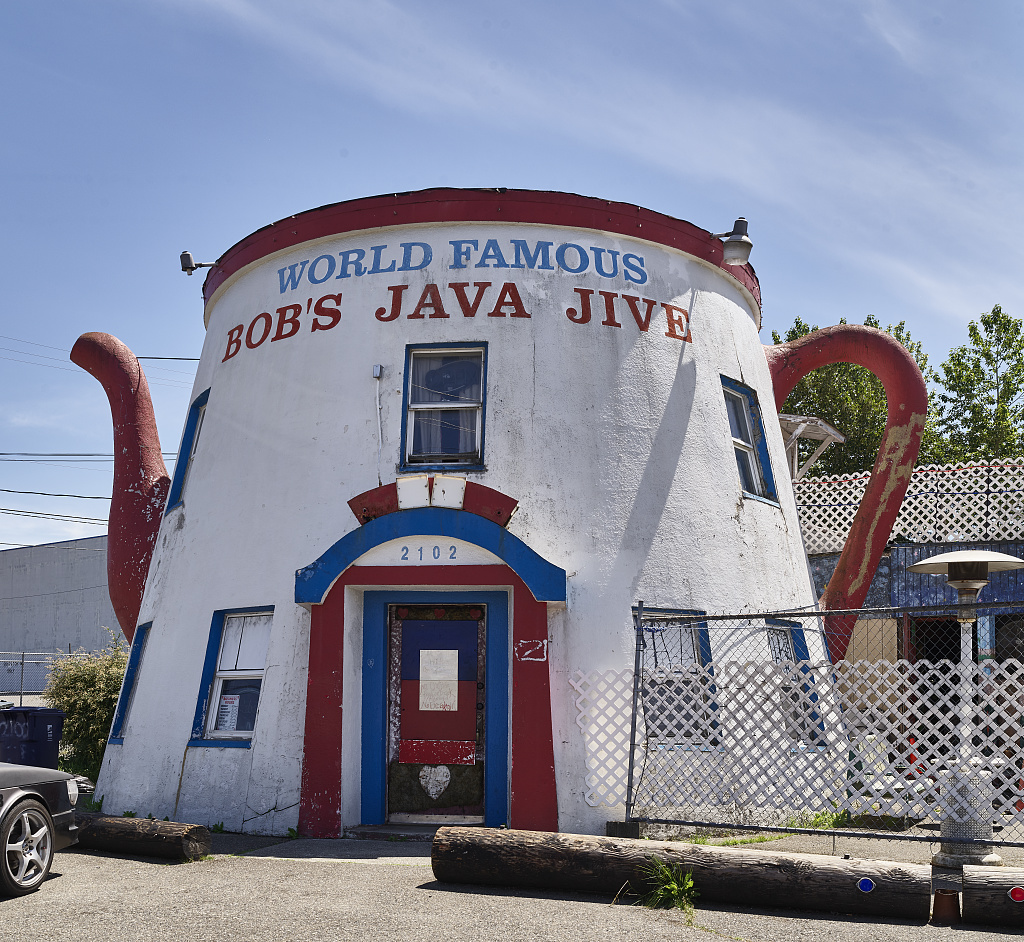
Originally named “Coffee Pot Restaurant,” dive bar Bob’s Java Jive was built in 1929 by Tacoma, Washington veterinarian Otis G. Button and designed by artist Bert Smyser. It measures 26 feet high and 30 feet wide and like other existing roadside architecture, went through several iterations. It was first a restaurant serving travelers along US Route 99 (now South Tacoma Way), then a food drive-thru, a speakeasy, and a “chaotically themed Polynesian dance club, complete with two macaque monkeys named Java and Jive,” describes South Sound Magazine.
Bob Radonich purchased the building in 1955, renaming it Bob’s Java Jive and decked it out in a jungle theme. It housed instrumental surf band The Ventures before they became a national sensation. It’s still owned by the same family and received national historical status in 2014. The register’s sheet provides fascinating details like how in 1957, the banquet hall featured a “fireplace made with an old Dodge truck rain shield that served as a fire hood” and that its now-demolished neighbor was the “Big Pump Service Station,” “featuring a gas station resembling a colossal gas pump and flower pot shaped restrooms.”
Novelty buildings weren’t always a welcomed part of history, which is why the Society for Commercial Archeology (SCA) was formed. Docomomo US, a nonprofit dedicated to modern architecture preservation, describes the importance of what the SCA covers, “It is the study of the places that make up our day to day lives: the restaurants we eat at, the lodging we stay at, the gas stations we stop at, the theaters we watch movies at, and the signs that point the way.”
When Butko began documenting roadside architecture in the 1980s, they were still viewed as “old, decrepit places.” But he saw “places that had been thriving parts of their communities, providing jobs to workers and enjoyment to customers.” And he’s not alone in this thought.
Debra Jane Seltzer has been documenting “America’s disappearing culture” for over 20 years on her website, RoadsideArchitecture.com. About the signs, buildings, and other items she records, Seltzer says, “They are valued by both people that live/lived in the community in which they exist and as greater nationwide/worldwide historic ‘objects’ and works of art.”
The website boasts over 2,700 pages, 70,000 photos, and features everything from giant coffee pots to giant junk food statues to penguins and polar bear signs. Each item is meticulously documented with descriptions, links, map locations, and more. Besides keeping lists of items that need to be visited or reshot, every winter, she also finds “the most recent Google Street View map to see if anything has changed (remodeled, demolished, etc.) and update descriptions.”
Seltzer says her ultimate goal is “to share these places with other people who will take interest to protect them by either local action or nationwide fundraising campaigns to restore or preserve them.”
The community in Stanton, Iowa did just this to preserve their iconic water towers. What, did you think coffee-inspired structures were limited to buildings and signs? In 1914, it was built as a regular 40,000-gallon-capacity water tower and then transformed into a Swedish coffee pot in 1971. Locals ran a successful campaign to add the handle, spout, and flowery design in recognition of the town’s Swedish heritage and local celebrity, Virginia Christine. She was known as “Mrs. Olson” in the Folgers TV commercials that ran during that time.
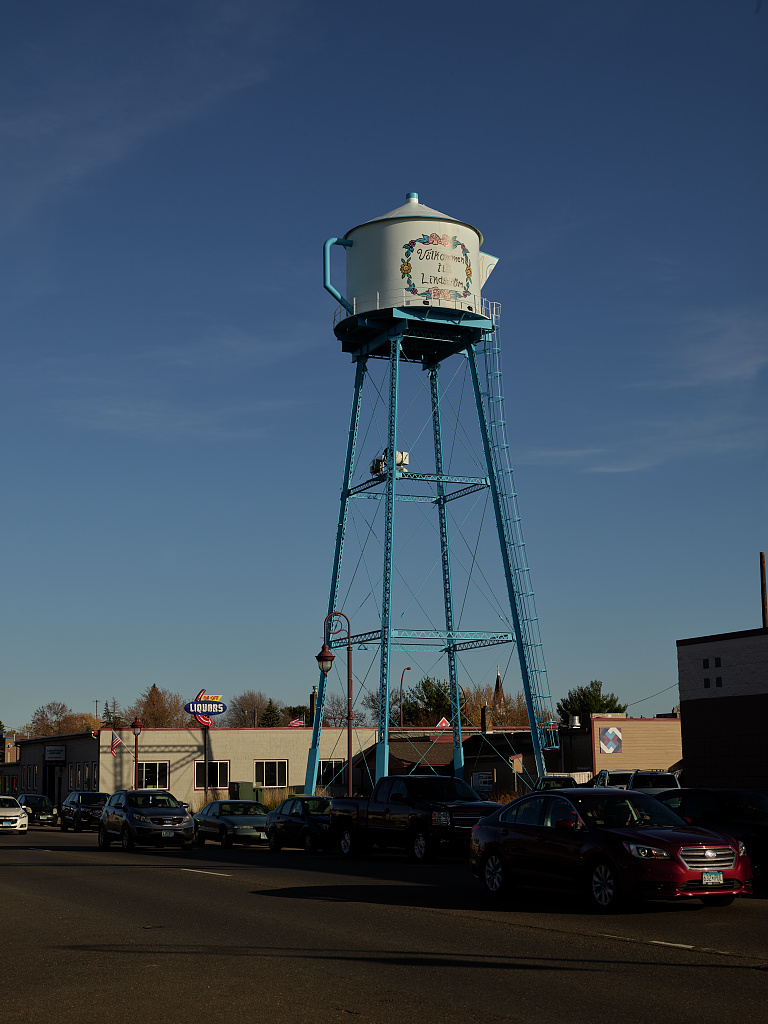
To increase the town’s water reserves, an accompanying water tower was built in 2000. With a matching floral design, the reservoir is shaped like a coffee cup and saucer and is still in operation today. When the world’s largest Swedish coffee pot ceased to work, residents rallied to save the coffee pot tower. It was taken down in 2015 and moved three blocks to live on the grounds of the Swedish Heritage and Cultural Center. Today, it serves as a tourist destination and a preservation victory story for roadside architecture enthusiasts.
Thanks to people like Butko, Seltzer, historical organizations, and the internet, roadside architecture now has more supporters than ever in its corner pushing for preservation. You can do your part by rallying for your local attractions or dropping by for a visit on your next road trip.
Jenn Chen (@thejennchen) is an Editor At Large at Sprudge Media Network. Read more Jenn Chen on Sprudge.






